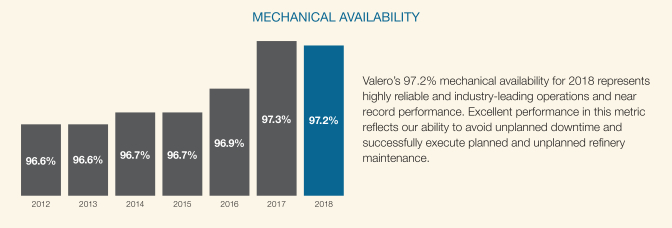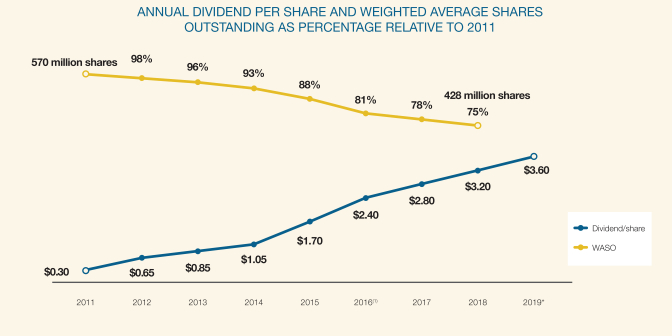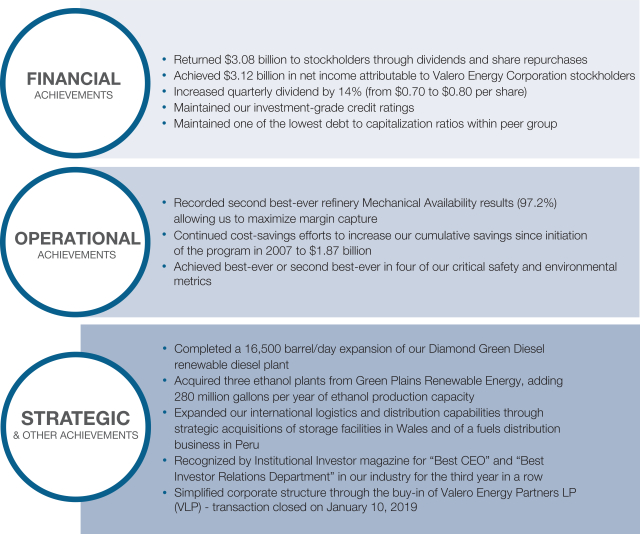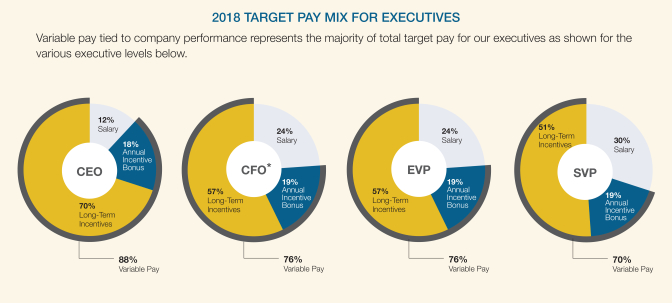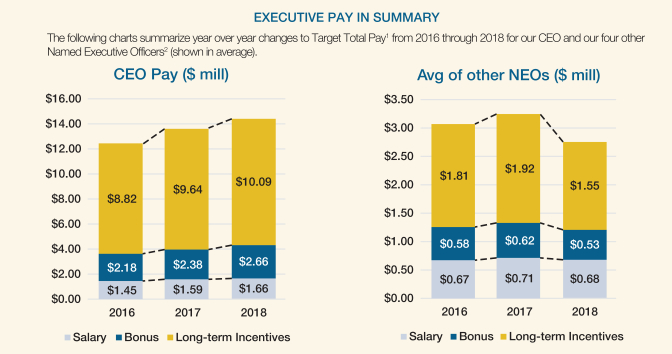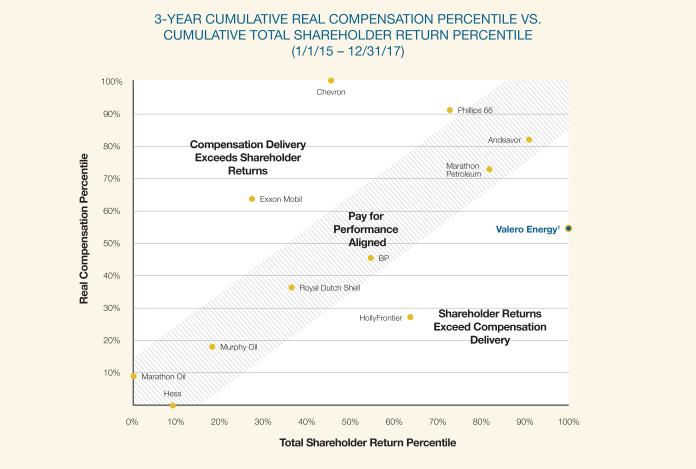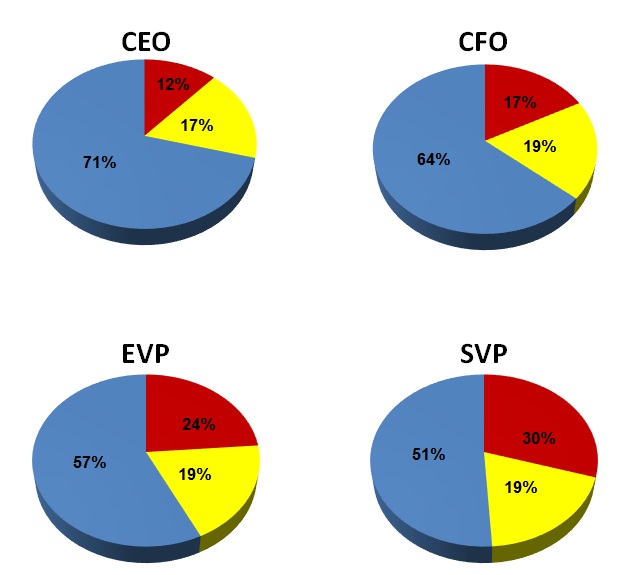CERTAIN RELATIONSHIPS AND RELATED TRANSACTIONS
REVIEW
Review
Our Board has adopted a Related Party Transaction Policy to establish procedures for the notification, review, approval, ratification, and disclosure of related party transactions. Under the policy, a related party transaction is a transaction, arrangement, or relationship in which (i) Valero (including any of its subsidiaries) was, is or will be a participant, (ii) the amount involved exceeds $120,000, and (iii) any “related person” had, has or will have a direct or indirect material interest. Under the policy, a related person means, generally, any person who would be deemed to be a “related person” as defined in Item 404 of SEC’s RegulationS-K. Under the policy, a related party transaction must be submitted to the Board’s Nominating/Governance and Public Policy Committee for review and approval. The policy is available on our website at www.valero.com > Investors > Corporate Governance > Governance Documents.
We also have a conflictConflict of interest policyInterest Policy to address instances in which an employee or director’s private interests may conflict with the interests of Valero. The policy is published on our intranet website. We have a Conflicts of Interest Committee (composed of Valero employees) to help administer our conflicts policy and to determine whether any employee or director’s private interests may interfere with the interests of Valero. Conflicts of interest are also addressed in our
Code of Business Conduct and Ethics. Any waiver of any provision of this code for executive officers or directors may be made only by the Board, and will be promptly disclosed as required by law or NYSE rule. | | | | |
| 62 | |  | | |
TRANSACTIONS WITH VALERO ENERGY PARTNERS LP
Relationship with VLP
Valero, through its subsidiaries, owns more than five percent of the common units Valero Energy Partners LP (VLP). Valero also owns, through its wholly owned subsidiary, the 2.0 percent general partner interest in VLP (the “General Partner”). The common units representing limited partner interests of VLP are listed for trading on the NYSE under the symbol “VLP.” References in this section of our proxy statement to “VLP” means Valero Energy Partners LP, one or more of its subsidiaries, or all of them taken as a whole. Our transactions with VLP are deemed to be related party transactions for purposes of these disclosures.
Mr. Gorder is Chairman of the Board and Chief Executive Officer of the General Partner. Mr. Riggs is a member of the board of directors of the General Partner. Mr. Browning is as an executive officer of the General Partner.
Distributions to Us and Other Payments from VLP
In 2016, we received $79.0 million in distributions from VLP with respect to our ownership of limited partner and general partner interests of VLP. On February 10, 2017, we received $26.0 million of distributions from VLP with respect to our limited partner and general partner interests.
Under VLP’s partnership agreement, VLP reimburses the General Partner and its affiliates, including Valero, for costs and expenses they incur and payments they make on behalf of VLP.
Agreements with VLP
2016 Contribution Agreements
Effective April 1, 2016, we entered into a contribution agreement with VLP under which we contributed to VLP a subsidiary that owns and operates a crude oil, intermediates, and refined petroleum products terminal supporting our McKee Refinery for total consideration of $240.0 million, which consisted of (i) a cash distribution to us of $204.0 million and (ii) the issuance to us of 728,775 common units of VLP and 14,873 general partner units of VLP; the common units and the general partner units had an aggregate value of $36.0 million.
Effective September 1, 2016, we entered into a contribution agreement with VLP under which we contributed to VLP our Meraux Terminal and Three Rivers Terminal for total consideration of $325.0 million, which consisted of (i) a cash distribution to us of $276.0 million and (ii) the issuance to us of 1,149,905 common units of VLP and 23,467 general partner units of VLP; the common units and the general partner units had an aggregate value of $49.0 million.
Omnibus Agreement
We have an amended and restated omnibus agreement with VLP, which addresses the following key matters:
the payment to us by VLP of an annual administrative fee of $12.5 million for our provision of certain services to VLP;
VLP’s obligation to reimburse us for certain direct or allocated costs and expenses that we may incur on behalf of VLP;
VLP’s right of first offer through December 16, 2018, to acquire certain of our transportation and logistics assets;
our right of first refusal to acquire certain of VLP’s assets; and
the parties’ indemnification obligations to one another.
So long as we control the General Partner, the omnibus agreement will remain in effect. If we cease to control the General Partner, either party may terminate the omnibus agreement, provided that the indemnification obligations will remain in effect in accordance with their terms.
Services and Secondment Agreement
Under our services and secondment agreement with the General Partner, as amended, certain of our employees are seconded to the General Partner to provide operational and maintenance services for certain pipelines and terminals of VLP, including routine operational and maintenance activities. During their period of secondment to the General Partner, the seconded employees are under the management and supervision of the General Partner.
The General Partner is required to reimburse us for the cost of the seconded employees, including their wages and benefits. If a seconded employee does not devote 100 percent of his or her time to providing services to the General Partner, the General Partner is required to reimburse us for only a prorated portion of such employee’s overall wages and benefits, based on the percentage of the employee’s time spent working for the General Partner. The services and secondment agreement will continue for an initial term of 10 years from the Service Date (as described in the agreement) with respect to each asset, and will extend automatically for successive renewal terms of one year each, unless terminated by either party per the terms of the agreement.
Tax Sharing Agreement
Under our tax sharing agreement with VLP, VLP is required to reimburse us for VLP’s share of state and local income and other taxes that we incur as a result of VLP’s tax items and attributes being included in a combined or consolidated state tax return filed by Valero. The amount of any such reimbursement is limited to any entity-level tax that VLP would have paid directly had VLP not been included in a combined group with Valero.
Lease Agreements
We have lease agreements with VLP with respect to the land on which certain VLP terminals are located. Generally, each lease agreement has an initial term of ten years with four automatic successive renewal periods of five years each. Either party may terminate each lease agreement after the initial term by providing written notice. We also have a ground lease agreement with VLP with an initial term of 20 years and no renewal periods. Initial base rents under these lease agreements are subject to annual inflation escalators, and VLP is required to pay us a customary expense reimbursement for taxes, utilities, and similar costs we incur related to the leased premises.
Commercial Agreements
We have entered into commercial agreements with VLP with respect to certain assets owned by VLP. Under these commercial agreements, VLP provides transportation and terminaling services to us. We have committed to pay VLP for minimum quarterly throughput volumes of crude oil and refined petroleum products, regardless of whether we physically deliver such volumes in any given quarter. These agreements have initial five-year terms, and under most of the agreements, we will have the option to renew the agreement with respect to each asset for one additional five-year term.
For the year ended December 31, 2016, we accounted for all of VLP’s revenues. VLP’s gross operating revenues for the year ended December 31, 2016, were $362.6 million.
PROPOSAL NO. 2—
RATIFY APPOINTMENT OF KPMG LLP
(Item (ITEM 2 on the proxy card)
ON THE PROXY CARD)The Audit Committee of the Board determined on February 23, 2017,Feb. 28, 2019, to engage KPMG LLP (“KPMG”) as Valero’s independent registered public accounting firm for the fiscal year ending DecemberDec. 31, 2017.2019. KPMG has served as Valero’s independent registered public accounting firm for fiscal years ended December 31, 2004 and following.
since 2004.The Audit Committee is directly responsible for the appointment, compensation determination, retention, and oversight of the independent auditors retained to audit Valero’s financial statements. The Audit Committee is responsible for the audit fee negotiations and fee approval associated with Valero’s retention of the independent auditing firm.
The Audit Committee annually reviews and evaluates the qualifications, performance, and independence of Valero’s independent auditing firm, and reviews and evaluates the lead partner of the independent auditor team. In conjunction with the mandated rotation of the audit firm’s lead engagement partner, the Audit Committee is involved in the selection of the audit firm’s new lead engagement partner. To monitor auditor independence, the Audit Committee periodically considers whether there should be a rotation of the independent auditing firm.
The members of the Audit Committee and the Board believe that the continued retention of KPMG to serve as Valero’s independent registered public accounting firm for the fiscal year ending DecemberDec. 31, 20172019, is in the best interests of Valero and its investors. Accordingly, the Board requests stockholder approval of the following resolution.
“RESOLVED, that the appointment of the firm of KPMG LLP as Valero’s independent registered public accounting firm for the purpose of conducting an audit of the consolidated financial statements and the effectiveness of internal control over financial reporting of Valero and its subsidiaries for the fiscal year ending DecemberDec. 31, 20172019, is hereby approved and ratified.”
The Board recommends that the stockholders vote “FOR” this proposal. Representatives of KPMG are expected to be present at the Annual Meeting to respond to appropriate questions raised at the Annual Meeting or make appropriate statements at the Annual Meeting.
| | |
Representatives of KPMG are expected to be present at the Annual Meeting to respond to appropriate questions raised at the Annual Meeting or make appropriate statements at the Annual Meeting. | | 
The Board recommends that the stockholders vote “FOR” this proposal. |
The affirmative vote of a majority of the voting power of the shares present in person or by proxy and entitled to vote is required for adoption of this proposal. If the appointment is not approved, the adverse vote will be considered as an indication to the Audit Committee that it should select another independent registered public accounting firm for the following year. Because of the difficulty and expense of making any substitution of public accountants so long after the beginning of the current year, it is contemplated that the appointment for 20172019 will be permitted to stand unless the Audit Committee finds other good reason for making a change.
KPMG LLP FEES
The following table presents fees for services provided to us by KPMG for the years shown (in millions).
|
| | | | | | | | |
| | | 2016 | | 2015 |
Audit Fees (1) | | $ | 7.5 |
| | $ | 7.2 |
|
Audit-Related Fees (2) | | 0.3 |
| | 0.3 |
|
| Tax Fees (3) | | — |
| | 0.2 |
|
All Other Fees (4) | | 0.3 |
| | 0.1 |
|
| total | | $ | 8.1 |
| | $ | 7.8 |
|
| | | | | | | | |
| | | 2018 | | | 2017 | |
Audit Fees (1) | | | 9.0 | | | $ | 7.6 | |
Audit-Related Fees (2) | | | 0.4 | | | | 0.3 | |
Tax Fees (3) | | | 0.5 | | | | 0.3 | |
All Other Fees | | | — | | | | — | |
total | | $ | 9.9 | | | $ | 8.2 | |
| |
| (1) | Represents fees for professional services rendered for the audit of the annual financial statements included in Valero’s annual reports on Form10-K, review of Valero’s interim financial statements included in Valero’s Forms10-Q, the audit of the effectiveness of Valero’s internal control over financial reporting, and services that are normally provided by the principal auditor ( e.g.(e.g., comfort letters, statutory audits, attest services, consents, and assistance with and review of documents filed with the SEC). In addition to the services listed above, KPMG served as the independent auditor of the financial statements included in the annual reports on Form10-K of Valero Energy Partners LP (VLP) for the years ended DecemberDec. 31, 20162018 and 2015,2017, and the audit of the effectiveness of VLP’s internal control over financial reporting as of DecemberDec. 31, 20162018 and DecemberDec. 31, 2015.2017. KPMG’s fees relating to VLP audits for 20162018 and 20152017 were $2.075$1.47 million and $1.325$1.50 million, respectively. |
| |
| (2) | Represents fees for assurance and related services that are reasonably related to the performance of the audit or review of Valero’s financial statements and not reported under the caption for Audit Fees. The fees listed above are related to the audit of Valero’s benefit plans.plans and one assurance service (Canada Renewable Fuels regulation audit). |
| |
| (3) | Represents fees for professional services rendered by KPMG for tax compliance tax advice, and tax planningconsulting services. |
| |
(4) | Represents For 2018, the fees for for professional services other thanprimarily relate to property tax consulting and compliance services. For 2017, the services reportedmajority of the disclosed fees relate to technical review and assistance on the assessment of potential elections under the preceding captions. The fees shown were for advisory services.IRS’s inventory price index computation LIFO rules. |
AUDIT COMMITTEE PRE-APPROVAL POLICY
Audit CommitteePre-Approval Policy
The Audit Committee adopted apre-approval policy to address thepre-approval of certain services rendered to Valero by its independent auditor. The text of that policy appears in Exhibit 99.01 to Valero’s Annual Report on Form10-K for the year ended DecemberDec. 31, 2014.
2017.All of the services rendered by KPMG to Valero for 20162018 werepre-approved specifically by the Audit Committee or pursuant to ourpre-approval policy. None of the services provided by KPMG were approved by the Audit Committee under thepre-approval waiver provisions of paragraph (c)(7)(i)(C) ofRule 2-01 ofRegulation S-X.
| | | | |
| 64 | |  | | |
REPORT OF THE AUDIT COMMITTEE FOR FISCAL YEAR 20162018
Management is responsible for Valero’s internal controls and financial reporting process. KPMG LLP (KPMG), Valero’s independent registered public accounting firm for the fiscal year ended DecemberDec. 31, 2016,2018, is responsible for performing an independent audit of Valero’s consolidated financial statements in accordance with the standards of the Public Company Accounting Oversight Board (“PCAOB”), and an audit of the effectiveness of Valero’s internal control over financial reporting in accordance with the standards of the PCAOB, and to issue KPMG’s reports thereon. The Audit Committee monitors and oversees these processes. The Audit Committee approves the selection and appointment of Valero’s independent registered public accounting firm and recommends the ratification of its selection and appointment to our Board.
The Audit Committee has reviewed and discussed Valero’s audited financial statements with management and KPMG. The committee has discussed with KPMG the matters required to be discussed by the statement on Auditing Standards No. 61, as amended (AICPA,
Professional Standards, Vol. 1. AU section 380 “Communication with Audit Committees”), as adopted by the PCAOB in Rule 3200T. The committee has received the written disclosures and the letter from KPMG required by applicable requirements of the PCAOB regarding the independent accountant’s communications with the audit committee concerning independence, and has discussed with KPMG that firm’s independence.
Based on the foregoing review, discussions, and other matters the Audit Committee deemed relevant and appropriate, the committee recommended to the Board that the audited financial statements of Valero be included in its Annual Report on Form10-K for the year ended DecemberDec. 31, 2016,2018, for filing with the SEC.
Members of the Audit Committee:
Randall J. Weisenburger, Chairman
Susan Kaufman Purcell
The material in this Report of the Audit Committee is not “soliciting material,” is not deemed filed with the SEC, and is not to be incorporated by reference in any of Valero’s filings under the Securities Act or the Exchange Act, respectively, whether made before or after the date of this proxy statement and irrespective of any general incorporation language therein.
PROPOSAL NO. 3—
ADVISORY VOTE TO APPROVE
COMPENSATION OF NAMED EXECUTIVE OFFICERS
(Item (ITEM 3 on the proxy card)
ON THE PROXY CARD)Our Board and our stockholders have determined to hold an advisory vote on executive compensation(“say-on-pay”) every year. Accordingly, we are asking stockholders to vote to approve the 20162018 compensation of our named executive officers as such compensation is disclosed pursuant to Item 402 of the SEC’sRegulation S-K, including the Compensation Discussion and Analysis, the compensation tables, and other narrative compensation disclosures required by Item 402. This proxy statement contains all of these required disclosures.
We request the stockholders to approve the following resolution:
“RESOLVED, that the compensation paid to Valero’s named executive officers, as disclosed pursuant to Item 402 of RegulationS-K, including the Compensation Discussion and Analysis, compensation tables, and narrative discussion, is hereby approved.”
Because the vote on this proposal is advisory, it will not affect compensation already paid or awarded to any named executive officer and will not be binding on Valero, the Board, or the Compensation Committee. The Board and Compensation Committee, however, will review the voting results and take into account the outcome in determining future annual compensation for the named executive officers.
The Board recommends that the stockholders vote “FOR” this proposal. | | |
Proxies will be voted for approval of the proposal unless otherwise specified. Approval of this proposal requires the affirmative vote of a majority of the shares present in person or represented by proxy at the meeting and entitled to vote on the proposal. | | 
The Board recommends that the stockholders vote “FOR” this proposal. |
| | | | |
| 66 | |  | | |
Governance Documents and Codes of the proposal unless otherwise specified. Approval of this proposal requires the affirmative vote of a majority of the shares present in person or represented by proxy at the meeting and entitled to vote on the proposal.Ethics
PROPOSAL NO. 4—
ADVISORY VOTE TO RECOMMEND THE FREQUENCY
OF STOCKHOLDER VOTES ON EXECUTIVE COMPENSATION
(Item 4 on the proxy card)
The SEC requires issuers, not less frequently than once every six calendar years, to provide a separate stockholder advisory vote to determine whether the advisory stockholder vote on compensation (as described in Proposal 3 above) will occur every one, two, or three years. We presented our first proposal for this recommendation at the annual meeting of stockholders held in 2011. We are therefore re-presenting this proposal at this year’s Annual Meeting to give stockholders the opportunity to express their preferred frequency for an advisory vote on compensation.
When voting on this proposal, you may make your choice among one year, two years, three years, or abstain, by marking the box on your proxy card that corresponds to your choice.
The Board recommends that stockholders have an annual vote (“every year”) on executive compensation and requests that the stockholders approve the following resolution.
“RESOLVED, that the stockholders recommend that Valero include, pursuant to Section 14A of the Securities Exchange Act of 1934, an advisory vote on the compensation of Valero’s named executive officers every:
ýyear
¨two years
¨three years
¨abstain
The Board recommends that the stockholders vote for the stockholder advisory vote on executive compensation to occur every year. Any uninstructed proxy cards will be voted for approval of the proposal as marked above (i.e., for an “every-year” frequency) unless otherwise specified.
You are not voting to approve or disapprove the Board’s recommendation, but you are being asked to recommend to the Board your preference from among the choices stated above on the frequency of stockholder votes on executive compensation.
Because the vote on this proposal is advisory in nature, it will not be binding on Valero, the Board or the Compensation Committee. However, the Board and Compensation Committee will review the voting results and take into account the outcome in determining the frequency of future advisory votes on executive compensation.
MISCELLANEOUS
GOVERNANCE DOCUMENTS AND CODES OF ETHICS
Our
Code of Ethics for Senior Financial Officers applies to our principal executive officer, principal financial officer, and controller. The code charges these officers with responsibilities regarding honest and ethical conduct, the preparation and quality of the disclosures in documents and reports we file with the SEC, and compliance with applicable laws, rules, and regulations. We have also adopted aCode of Business Conduct and Ethics which applies to all of our employees and directors.
We post the following documents on our website at www.valero.com > Investors > Corporate Governance > Governance Documents. A printed copy of any of these documents is available to any stockholder upon request. Requests for documents must be in writing and directed to Valero’s Secretary at the address indicated on the cover page of this proxy statement.
Restated Certificate of Incorporation
Code of Business Conduct and Ethics
Code of Ethics for Senior Financial Officers
Corporate Governance Guidelines
Compensation Committee Charter
Nominating/Governance and Public Policy Committee Charter
Related Party Transactions Policy
Compensation Consultant Disclosures Policy
Policy on Executive Compensation in Restatement Situations
Policy on Political Contributions, Lobbying, and Trade Associations
Policy on Vesting of Performance Shares
STOCKHOLDER COMMUNICATIONS, NOMINATIONS, AND PROPOSALS
Stockholder Communications, Nominations, and ProposalsStockholders and other interested parties may communicate with the Board, itsnon-management directors, or the Lead Director by sending a written communication addressed to “Board of Directors,” “Non-Management“Non-Management Directors,” or “Lead Director” in care of Valero’s Secretary at the address indicated on the cover page of this proxy statement.
If you wishIn order to submit a stockholder proposal to be includedfor inclusion in our proxy statement for the 20182020 annual meeting of stockholders pursuant toRule 14a-8 of the Exchange Act, we must receive your written proposal on or before November 22, 2017.Nov. 21, 2019. The proposal must comply withRule 14a-8, which lists the requirements for the inclusion of stockholder proposals in company-sponsored proxy materials.
If you wish toTo present a stockholder proposal at the 20182020 annual meeting of stockholders that is not the subject of a proposal pursuant toRule 14a-8 of the Exchange Act, or if you wish to recommend to the Board’s Nominating/Governance and Public Policy Committee the nomination of a person for election to the Board, you must follow the procedures stated in Article I, Section 9 of our bylaws. These procedures include the requirement that your proposal must be delivered to Valero’s Secretary not later than the close of business on the 90th day or earlier than the close of business on the 120th day prior to the first anniversary of the preceding year’s annual meeting. If the date of the annual meeting is more than 30 days before or more than 60 days after such anniversary date, your notice must be delivered not earlier than the close of business on the 120th day prior to such annual meeting and not later than the close of business on the later of the 90th day
prior to such annual meeting or the 10th day following the day we publicly announce the date of the 20182020 annual meeting of stockholders.
An eligible stockholder, or eligible group of stockholders, that wisheswants to nominate a candidate for election to the Board pursuant to the proxy access provisions of our bylaws must follow the procedures stated in Article I, Section 9A of our bylaws. These procedures include the requirement that your nomination must be delivered to Valero’s Secretary not later than the close of business on the 120th day or earlier than the close of business on the 150th day prior to the first anniversary of the preceding year’s annual meeting. If the date of the annual meeting is more than 30 days before or more than 60 days after such anniversary date, your notice must be delivered not later than the 120th day prior to such annual meeting or, if later, the 10th day following the day we publicly announce the date of the 20182020 annual meeting of stockholders.
Our bylaws are available on our website at www.valero.com > Investors > Corporate Governance > Governance Documents. Stockholders are urged to review all applicable rules and consult legal counsel before submitting a nomination or proposal to Valero.
OTHER BUSINESS
MISCELLANEOUS
Other Business
If any matters not referred to in this proxy statement properly come before the Annual Meeting or any adjournments or postponements thereof, the enclosed proxies will be deemed to confer discretionary authority on the individuals named as proxies to vote the shares represented by proxy in accordance with their best judgments. The Board is not currently aware of any other matters that may be presented for action at the Annual Meeting.
FINANCIAL STATEMENTS
Financial StatementsConsolidated financial statements and related information for Valero, including audited financial statements for the fiscal year ended DecemberDec. 31, 2016,2018, are contained in Valero’s Annual Report on Form10-K. We have filed our Annual Report on Form10-K with the SEC. You may review this report on the internet as indicated in the Notice and through our website (www.valero.com > Investors > Financial Information > SEC Filings).
HOUSEHOLDING
HouseholdingThe SEC’s rules allow companies to send a single Notice or single copy of annual reports, proxy statements, prospectuses, and other disclosure documents to two or more stockholders sharing the same address, subject to certain conditions. These “householding” rules are intended to provide greater convenience for stockholders, and cost savings for companies, by reducing the number of duplicate documents that stockholders receive. If your shares are held by an intermediary broker, dealer, or bank in “street name,” your consent to householding may be sought, or may already have been sought, by or on behalf of the intermediary. If you prefer to receive your own set of proxy materials now or in future years, you may request a duplicate set by phone at800-579-1639, or you may contact your broker.
TRANSFER AGENT
Transfer AgentComputershare Investor Services serves as our transfer agent, registrar, and dividend paying agent with respect to our Common Stock. Correspondence relating to any stock accounts, dividends, or transfers of stock certificates should be addressed to:
Computershare Investor Services
Shareholder Communications
250 Royallby regular mail:
P.O. Box 505000
Louisville, KY 40233-5000
by overnight delivery:
462 South 4th Street
Canton, Massachusetts 02021
Suite 1600
Louisville, KY 40202
(888) 470-2938
(312) 360-5261
www.computershare.com
| | | | |
| 68 | |  | | |
www.computershare.comAnnex A
Adjusted earnings per common share—assuming dilution
for the year ended December 31, 2018
| | | | |
Earnings per common share—assuming dilution (GAAP) | | $ | 7.29 | |
Exclude adjustments: | | | | |
Blender’s tax credit attributable to Valero Energy Corporation stockholders (a) | | | 0.18 | |
Texas City Refinery fire expenses (b) | | | (0.02 | ) |
Environmental reserve adjustments (c) | | | (0.20 | ) |
Loss on early redemption of debt (d) | | | (0.07 | ) |
Income tax benefit from tax reform (e) | | | 0.03 | |
Total adjustments | | | (0.08 | ) |
Adjusted earnings per common share—assuming dilution | | $ | 7.37 | |
| (a) | The biodiesel blender’s tax credit is attributable to volumes blended during 2017 and is not related to 2018 activities. | |
| (b) | The costs incurred to respond to and assess the damage caused by the fire that occurred at our Texas City Refinery on April 19, 2018, are specific to that event and are not ongoing costs incurred in our operations. | |
| (c) | The environmental reserve adjustments are attributable to sites that were shut down by prior owners and subsequently acquired by us (referred to by us asnon-operating sites). | |
| (d) | The penalty and other expenses incurred in connection with the early redemption of our 9.375% senior notes due March 15, 2019 are not associated with the ongoing costs of our borrowing and financing activities. | |
| (e) | Income tax benefit from enactment of the Tax Cut and Jobs Act of 2017 is associated with changes in U.S. tax legislation and is not indicative of our core performance. | |
| | | | |
| | 
| | A-1 |

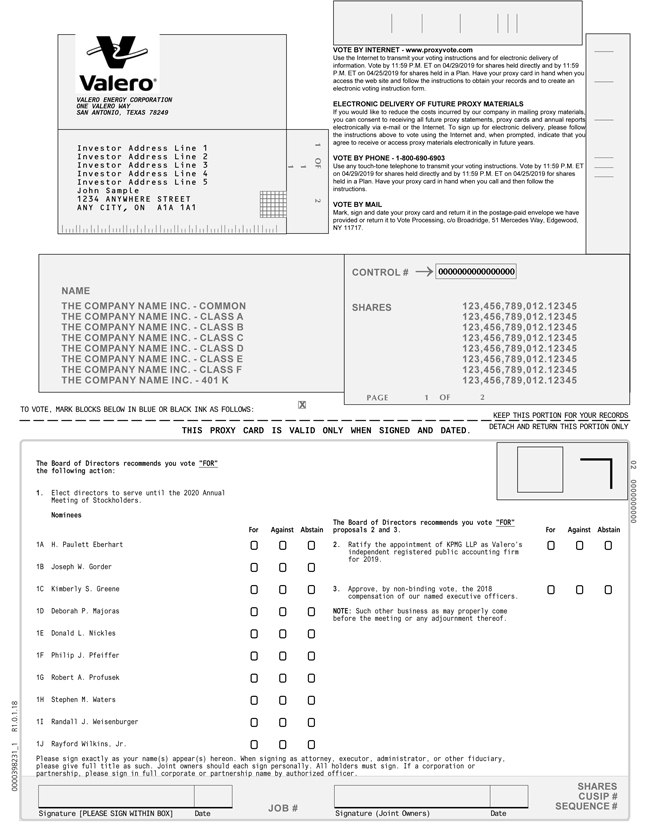
VALERO ENERGY CORPORATION
ONE VALERO WAY
SAN ANTONIO, TXTEXAS 78249
Investor Address Line Investor Address Line Investor Address Line Investor Address Line Investor Address Line John Sample 1234 ANYWHERE STREET ANY CITY, ON A1A 1A1 1 2 3 4 5 1 1 1 OF 2 VOTE BY INTERNET - INTERNET—www.proxyvote.com
Use the Internet to transmit your voting instructions and for electronic delivery of information up untilinformation. Vote by 11:59 P.M. Eastern Time the day before the cut-off date or meeting date.ET on 04/29/2019 for shares held directly and by 11:59 P.M. ET on 04/25/2019 for shares held in a Plan. Have your proxy card in hand when you access the web site and follow the instructions to obtain your records and to create an electronic voting instruction form.
ELECTRONIC DELIVERY OF FUTURE PROXY MATERIALS
If you would like to reduce the costs incurred by our company in mailing proxy materials, you can consent to receiving all future proxy statements, proxy cards and annual reports electronically viae-mail or the Internet. To sign up for electronic delivery, please follow the instructions above to vote using the Internet and, when prompted, indicate that you agree to receive or access proxy materials electronically in future years.
VOTE BY PHONE - PHONE—1-800-690-6903
Use any touch-tone telephone to transmit your voting instructions up untilinstructions. Vote by 11:59 P.M. Eastern Time the day before the cut-off date or meeting date.ET on 04/29/2019 for shares held directly and by 11:59 P.M. ET on 04/25/2019 for shares held in a Plan. Have your proxy card in hand when you call and then follow the instructions.
VOTE BY MAIL
Mark, sign and date your proxy card and return it in the postage-paid envelope we have provided or return it to Vote Processing, c/o Broadridge, 51 Mercedes Way, Edgewood, NY 11717.
NAME THE COMPANY NAME INC.—COMMON THE COMPANY NAME INC.—CLASS A THE COMPANY THE COMPANY THE COMPANY THE COMPANY THE COMPANY NAME INC.—CLASS F THE COMPANY NAME INC.—401 K NAME INC.—CLASS B NAME INC.—CLASS C NAME INC.—CLASS D NAME INC.—CLASS E CONTROL# SHARES PAGE → 1 OF 123,456,789,012.12345 123,456,789,012.12345 123,456,789,012.12345 123,456,789,012.12345 123,456,789,012.12345 123,456,789,012.12345 123,456,789,012.12345 123,456,789,012.12345 2 x TO VOTE, MARK BLOCKS BELOW IN BLUE OR BLACK INK AS FOLLOWS:
KEEP THIS PORTION FOR YOUR RECORDS
- - - - - - - - - - - - - - - - - - - - - - - - - - - - - - - - - - - - - - - - - - - - - - - - - - - - - - - - - - - - - - - - - - - - - - - - - - - - - - - - - - - - - - - - - - - - - - - - - - - - - - - - - - -
DETACH AND RETURN THIS PORTION ONLY
THIS PROXY CARD IS VALID ONLY WHEN SIGNED AND DATED.
|
| | | | | | | | | | | | | | |
| Valero Energy Corporation | | | | | | | | | | | | |
| | Vote on Directors | | | | | | | | | | | | |
| | The Board of Directors recommends a vote “FOR” the following action: | | | | | | Vote on Proposals | | | | | |
| | 1. | Elect directors to serve until the 2018 annual meeting of stockholders. | | For | Against | Abstain | | The Board of Directors recommends a vote FOR proposals 2 and 3. | | | | | |
| | | Nominees: | | | | | | | | | | | |
| | | 1a. H. Paulett Eberhart | | 0 | 0 | 0 | | | | For | Against | Abstain | |
| | | 1b. Joseph W. Gorder | | 0 | 0 | 0 | | 2. | Ratify the appointment of KPMG LLP as Valero Energy’s independent registered public accounting firm for 2017. | | 0 | 0 | 0 | |
| | | 1c. Kimberly S. Greene | | 0 | 0 | 0 | | | | | | | | |
| | | 1d. Deborah P. Majoras | | 0 | 0 | 0 | | 3. | Approve, by nonbinding vote, the 2016 compensation of our named executive officers. | | 0 | 0 | 0 | |
| | | 1e. Donald L. Nickles | | 0 | 0 | 0 | | | | | | | | |
| | | 1f. Philip J. Pfeiffer | | 0 | 0 | 0 | | The Board of Directors recommends a vote for “1 YEAR” on the following proposal. | | | | | |
| | | 1g. Robert A. Profusek | | 0 | 0 | 0 | | | | | 1 Year | 2 Years | 3 Years | Abstain |
| | | 1h. Susan Kaufman Purcell | | 0 | 0 | 0 | | 4. | Advisory vote to recommend the frequency of stockholder votes on executive compesnation. | | 0 | 0 | 0 | 0 |
| | | 1i. Stephen M. Waters
| | 0 | 0 | 0 | | | | | | | | |
| | | 1j. Randall J. Weisenburger
| | | | | | | | | | | | |
| | | 1k. Rayford Wilkins, Jr.
| | | | | | | | | | | | |
| | | | | | | | | NOTE: Such other business as may properly come before the meeting or any adjournment thereof. | | | | | |
| | | | | | | | | | | | | | | |
| | Please sign exactly as your name(s) appear(s) hereon. When signing as attorney, executor, administrator, or other fiduciary, please give full title as such. Joint owners should each sign personally. All holders must sign. If a corporation or partnership, please sign in full corporate or partnership name by authorized officer. | | | | | | |
| | | | | | | | | | | | | | | |
| | | | | | | | | | | |
| | Signature [PLEASE SIGN WITHIN BOX] | | Date | | | Signature (Joint Owners) | | Date | | |
The Board of Directors recommends you vote “FOR” the following action: 1. Elect directors to serve until the 2020 Annual Meeting of Stockholders. Nominees 1A H. Paulett Eberhart 1B Joseph W. Gorder 1C Kimberly S. Greene 1D Deborah P. Majoras 1E Donald L. Nickles 1F Philip J. Pfeiffer 1G Robert A. Profusek 1H Stephen M. Waters 18 . 1 . 0 . 1I Randall J. Weisenburger R1 1 1J Rayford Wilkins, Jr. Please sign exactly as your name(s) appear(s) hereon. When signing as attorney, executor, administrator, or other fiduciary, please give full title as such. Joint owners should each sign personally. All holders must sign. If a corporation or partnership, please sign in full corporate or partnership name by authorized officer. 0000398231 Signature [PLEASE SIGN WITHIN BOX] For 0 0 0 0 0 0 0 0 0 0 JOB# Date Against Abstain 0 0 0 0 0 0 0 0 0 0 0 0 0 0 0 0 0 0 0 0 The Board of Directors recommends you vote “FOR” proposals 2 and 3. 2. 3. NOTE: Such other business as may properly come before the meeting or any adjournment thereof. Signature (Joint Owners) Ratify the appointment of KPMG LLP as Valero’s independent registered public accounting firm for 2019. Approve, bynon-binding vote, the 2018 compensation of our named executive officers. Date For 0 0 SEQUENCE# Against Abstain 0 0 SHARES CUSIP# 0 0
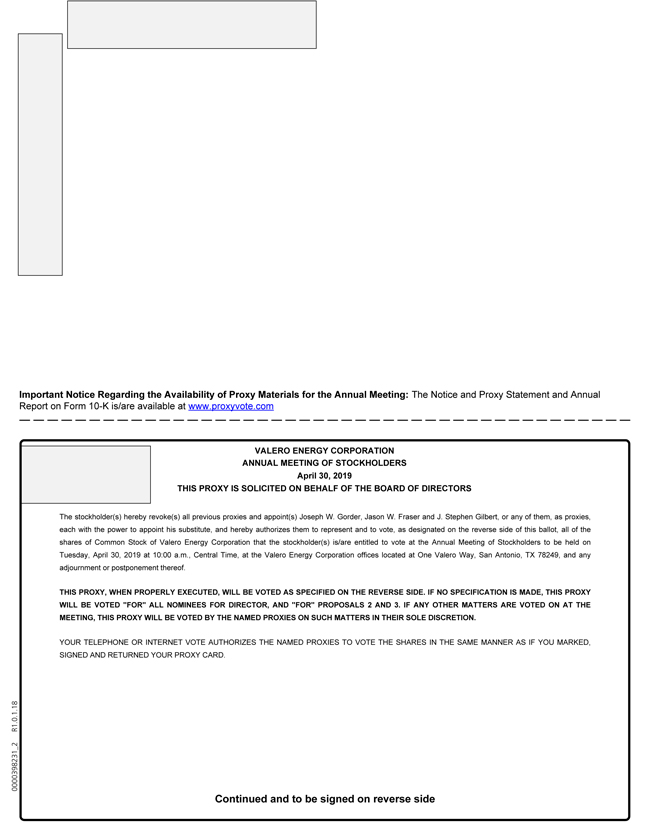
Important Notice Regarding the Availability of Proxy Materials for the Annual Meeting:
Combo Document (Notice The Notice and Proxy Statement and Annual Report on Form 10-K) is10-K is/are available at www.proxyvote.com.
- - - - - - - - - - - - - - - - - - - - - - - - - - - - - - - - - - - - - - - - - - - - - - - - - - - - - - - - - - - - - - - - - - - - - - - - - - - - - - - - - -
|
|
|
VALERO ENERGY CORPORATION |
THIS PROXY IS SOLICITED ON BEHALF OF THE BOARD OF DIRECTORS |
ANNUAL MEETING OF STOCKHOLDERS |
MAY 3, 2017 |
|
The stockholder(s) hereby revoke(s) all previous proxies and appoint(s) Joseph W. Gorder, Jay D. Browning and J. Stephen Gilbert, or any of them, as proxies, each with the power to appoint his substitute, and hereby authorizes them to represent and to vote, as designated on the reverse side of this ballot, all of the shares of Common Stock of Valero Energy Corporation that the stockholder(s) is/are entitled to vote at the Annual Meeting of Stockholders to be held on Wednesday, May 3, 2017 at 10:00 a.m., Central Time, at the Valero Energy Corporation offices located at One Valero Way, San Antonio, TX 78249, and any adjournment or postponement thereof.
|
|
THIS PROXY, WHEN PROPERLY EXECUTED, WILL BE VOTED AS SPECIFIED ON THE REVERSE SIDE. IF NO SPECIFICATION IS MADE, THIS PROXY WILL BE VOTED “FOR” ALL NOMINEES FOR DIRECTOR, “FOR” PROPOSALS 2 AND 3, AND FOR “1 YEAR” ON PROPOSAL 4. IF ANY OTHER MATTERS ARE VOTED ON AT THE MEETING, THIS PROXY WILL BE VOTED BY THE NAMED PROXIES ON SUCH MATTERS IN THEIR SOLE DISCRETION. |
|
YOUR TELEPHONE OR INTERNET VOTE AUTHORIZES THE NAMED PROXIES TO VOTE THE SHARES IN THE SAME MANNER AS IF YOU MARKED, SIGNED AND RETURNED YOUR PROXY CARD. |
|
|
|
|
Continued and to be signed on reverse side |
www.proxyvote.com VALERO ENERGY CORPORATION ANNUAL MEETING OF STOCKHOLDERS April 30, 2019 THIS PROXY IS SOLICITED ON BEHALF OF THE BOARD OF DIRECTORS The stockholder(s) hereby revoke(s) all previous proxies and appoint(s) Joseph W. Gorder, Jason W. Fraser and J. Stephen Gilbert, or any of them, as proxies, each with the power to appoint his substitute, and hereby authorizes them to represent and to vote, as designated on the reverse side of this ballot, all of the shares of Common Stock of Valero Energy Corporation that the stockholder(s) is/are entitled to vote at the Annual Meeting of Stockholders to be held on Tuesday, April 30, 2019 at 10:00 a.m., Central Time, at the Valero Energy Corporation offices located at One Valero Way, San Antonio, TX 78249, and any adjournment or postponement thereof. THIS PROXY, WHEN PROPERLY EXECUTED, WILL BE VOTED AS SPECIFIED ON THE REVERSE SIDE. IF NO SPECIFICATION IS MADE, THIS PROXY WILL BE VOTED “FOR” ALL NOMINEES FOR DIRECTOR, AND “FOR” PROPOSALS 2 AND 3. IF ANY OTHER MATTERS ARE VOTED ON AT THE MEETING, THIS PROXY WILL BE VOTED BY THE NAMED PROXIES ON SUCH MATTERS IN THEIR SOLE DISCRETION. YOUR TELEPHONE OR INTERNET VOTE AUTHORIZES THE NAMED PROXIES TO VOTE THE SHARES IN THE SAME MANNER AS IF YOU MARKED, SIGNED AND RETURNED YOUR PROXY CARD. Continued and to be signed on reverse side












































